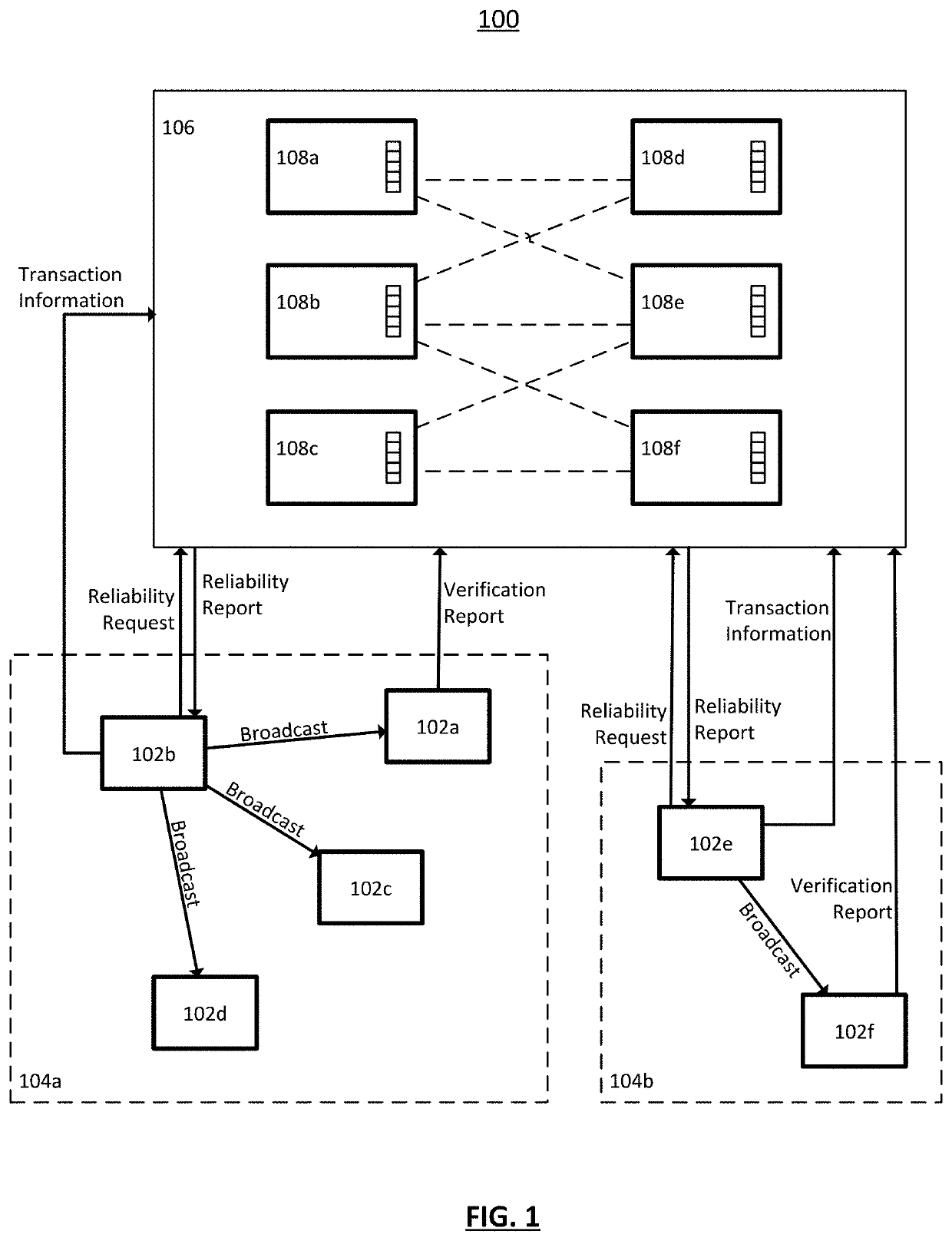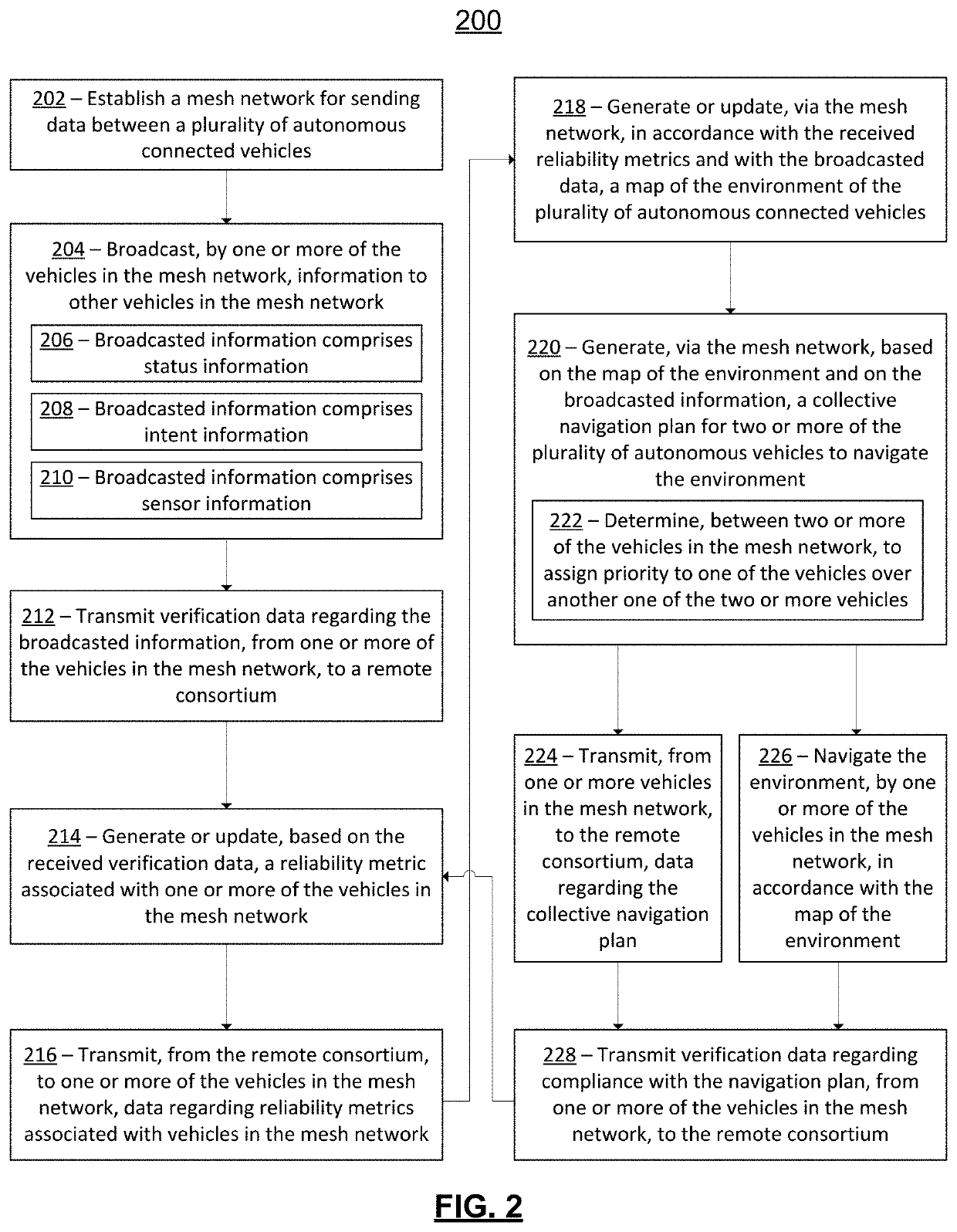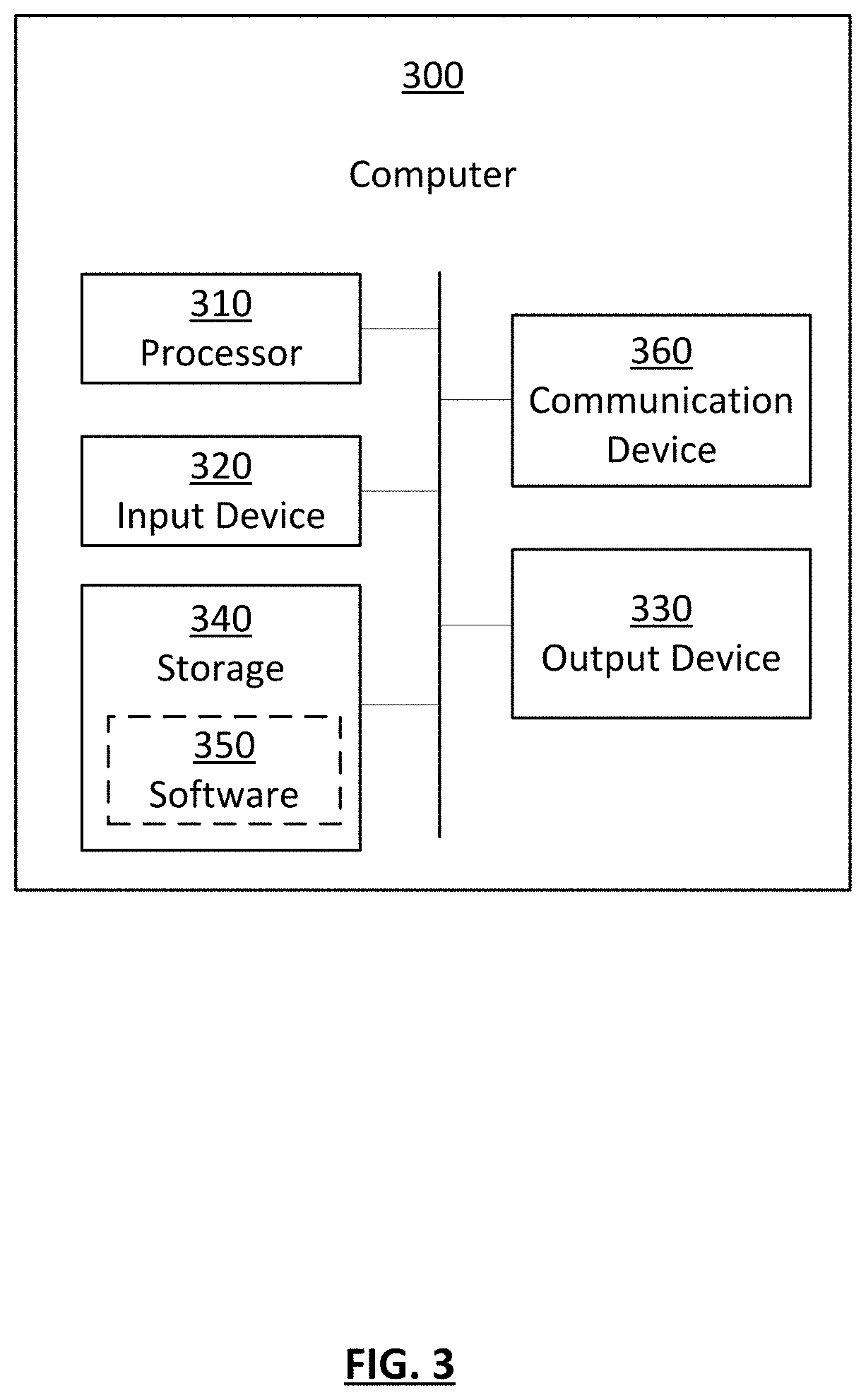Systems and methods for optimizing cooperative actions among heterogeneous autonomous connected machines
- Summary
- Abstract
- Description
- Claims
- Application Information
AI Technical Summary
Benefits of technology
Problems solved by technology
Method used
Image
Examples
Embodiment Construction
[0049]Described herein are exemplary embodiments of system for optimizing cooperative actions among heterogeneous autonomous connected machines, which may address the problems and shortcomings of known autonomous vehicle and machine systems and methods described above.
[0050]FIG. 1 depicts a system 100 for optimizing cooperative actions among heterogeneous autonomous connected machines, in accordance with some embodiments.
[0051]As shown, system 100 may include machines 102a-102f grouped into two mesh networks 104a and 104b, as well as remote consortium 106 including consortium members 108a-108f. In the example shown in FIG. 1, there are six machines 102a-102f grouped into two mesh networks 104a and 104b. However, in some embodiments, system 100 may include any number of machines 102 greater than two. In some embodiments, system 100 may include hundreds, thousands, or tens of thousands or more individual machines. Similarly, while the example shown in FIG. 1 shows machines 102 grouped...
PUM
 Login to View More
Login to View More Abstract
Description
Claims
Application Information
 Login to View More
Login to View More - R&D
- Intellectual Property
- Life Sciences
- Materials
- Tech Scout
- Unparalleled Data Quality
- Higher Quality Content
- 60% Fewer Hallucinations
Browse by: Latest US Patents, China's latest patents, Technical Efficacy Thesaurus, Application Domain, Technology Topic, Popular Technical Reports.
© 2025 PatSnap. All rights reserved.Legal|Privacy policy|Modern Slavery Act Transparency Statement|Sitemap|About US| Contact US: help@patsnap.com



